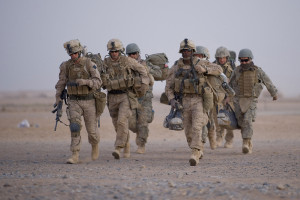
Some analysts are convinced that the Americans are using the Taliban to further their interest in maintaining a long-term US military presence in Afghanistan. The Americans are clearly uninterested in a peaceful and stable Afghanistan, and they are attempting to take advantage of the danger that the situation will become worse after 2014 in order to extract a favorable status for US forces. In particular, Washington intends using its military contingent afterwards to project its military power into the region, especially against China, Iran, India and Russia, and it also intends employing it to secure advantages for itself in the exploitation of Afghanistan’s rich natural resources.
It also well known that the Taliban, especially the radicals among them, are already making plans to take power after the troops withdraw, as they did in the recent past. According to Pentagon data, rebel groups of the Afghan opposition are still attacking both troops of the Western allies and, especially, the Americans, and government units. The Americans believe that they are the main threat to the country’s security. Analysts see similarities to the situation prior to the withdrawal of Soviet troops from Afghanistan in 1989.
The local populace has pleasant memories of their role despite the austerities and difficulties that everyone had to overcome during that period. Afghans also celebrate the progress that was made under the Taliban, especially in the field of human rights, quality of education, etc. Thousands of Afghan women attended school for the first time during that period. That is generally recognized as a significant breakthrough in protection of women’s rights in Afghanistan. The country’s current rulers continued that process after the ouster of the Taliban.
It is currently difficult to predict where events will lead the country after 2014. After all, the foreign soldiers who are currently providing relative stability will not be the only ones to depart. Presidential elections are scheduled to take place in April 2014, and Karzai will leave his post as provided by the Afghan constitution, which, on the whole, is still followed. Not only will the troops be withdrawn, things will change politically; Afghanistan will get a new leader. The well-known Afghan journalist Saad Mohseni recently said in a meeting with reporters that political changes in the power structure, i.e., the arrival of new leaders, are paramount for Afghans. He and other knowledgeable Afghans with close ties to the government are convinced that there should be no political upheavals in the country over the next 5-6 years.
However, both the Afghans and Afghanistan’s friends, including Russia, still have concerns. Will it be possible after 2014 to keep things peaceful and tranquil in this society that has been torn by ethnic conflicts?
Analysts believe that Karzai is trying to make sure someone from among his close associates, a Pashtun like himself, of course, becomes the country’s leader. The situation here is similar to that in Iran, which will hold its presidential elections in May. It is highly likely that of the 3-4 possible candidates for Ahmadinejad’s job the person chosen will be loyal to the current President and his associates, although that is not guaranteed, of course. Similarly, the ruling regime in Afghanistan is using all of its administrative resources to make sure that the people “needed” by Karzai and his team get in. The financial and economic aspects of any government are such that those in power do not want to let them slip through their fingers.
The Taliban’s behavior after the balance of military-political forces changes in 2014 makes for an interesting forecast. As far as we know, President Karzai is not allergic to this political force. He realizes that the Taliban will assert itself one way or another even before 2014 in anticipation of participating in deciding the country’s fate.
It is clear that, despite statements by members of the opposition, which includes a number of Taliban, the country’s current leader is willing to resume the “frozen” negotiations with the Taliban and once again include them in the political process. I believe that could defuse tensions in Afghan society and initiate its step-by-step consolidation. In the final analysis, the country’s entire population, especially women and children, are suffering from the instability.
Jawed Ahmad, an ethnic Afghan working for the Asia Program of the Marshall Fund of the United States, believes that the peace negotiations between the warring parties in Afghanistan need to resume. It is only with a total cease-fire by all parties to the conflict that a mutual understanding can be reached and the Taliban convinced to lay down their arms. The question remains, however, will the Taliban leaders agree to that? They will obviously want to remain influential in Afghanistan and acquire their own “area of responsibility” in Afghan society.
Russia is almost free of the post-Afghanistan syndrome. We would be happy to help our neighbors, but that will be impossible until stability is restored and the various clans and ethnic groups, Shiites and Sunnis find a common language and come to understand that even a bad peace is better than any war. We will see in 2014 whether the international community and the Afghan people themselves can bring order to Afghanistan, or whether the country will continue the unceasing conflicts that this long-suffering state has endured for decades.
If both a mutual understanding within the country and a coherence of action by foreign stakeholders (the United States, the Western countries, Russia, China, India and Pakistan) can be achieved, we can expect a gradual normalization of the socioeconomic situation there.
V. A. Maleyev is an expert Orientalist. This article was written expressly for New Eastern Outlook.